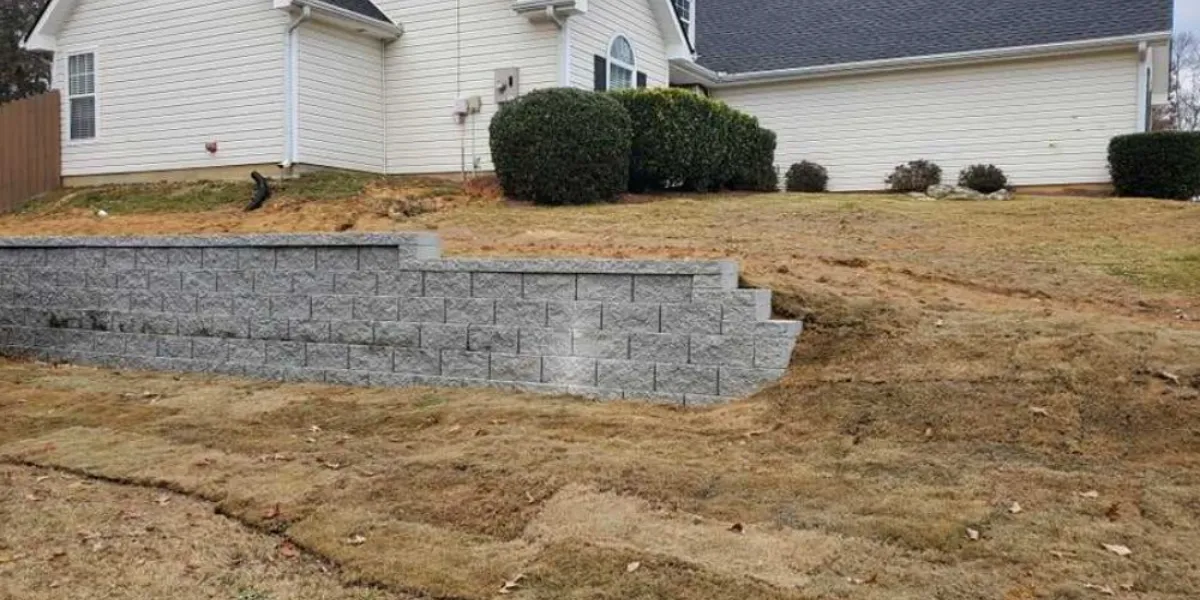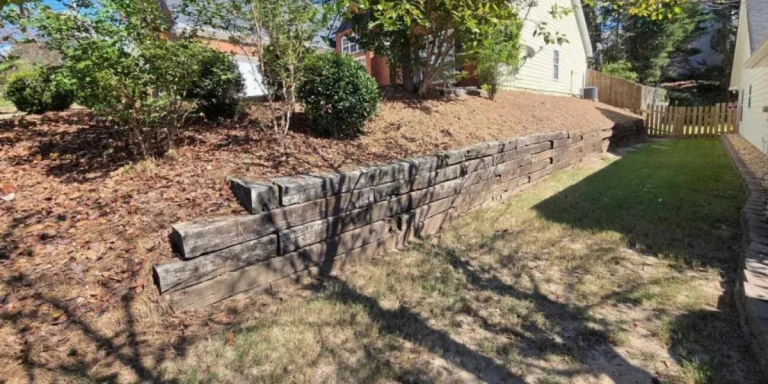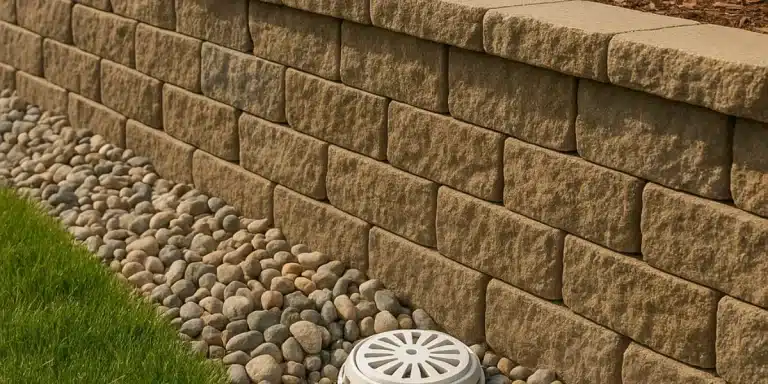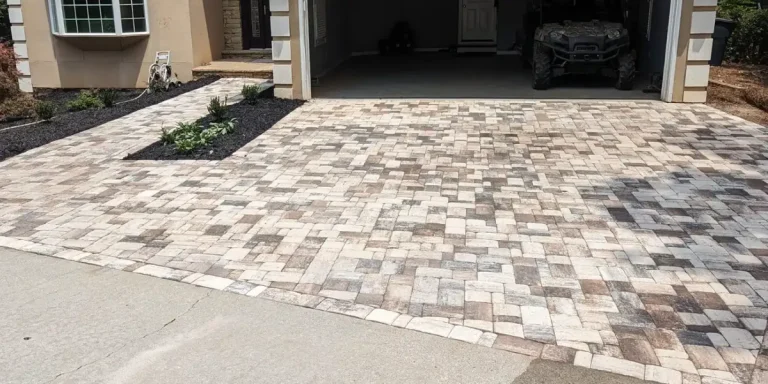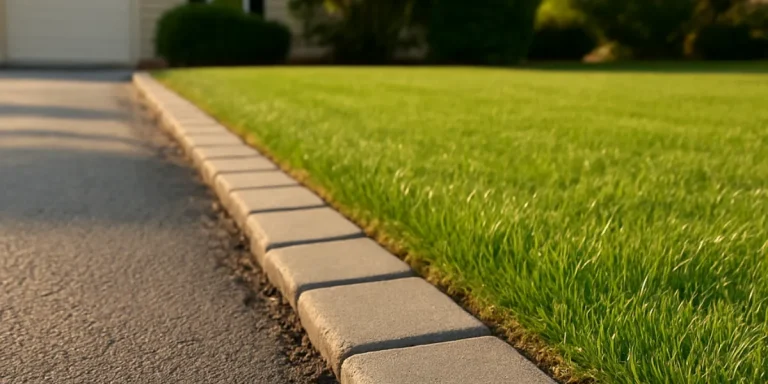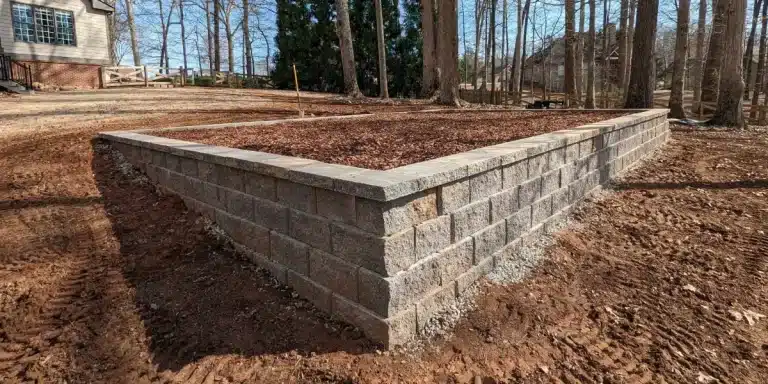Do You Need a Permit for a Retaining Wall in Georgia?
If you're planning to build a retaining wall on your property in Georgia, you might be wondering: Do I need a permit? The answer depends on several factors, including the wall's height, location, purpose, and your local jurisdiction’s building codes.
At Razor Sharp Lawn and Landscape, we specialize in building safe, durable, and code-compliant retaining walls across Hoschton and the surrounding Northeast Georgia area. In this post, we’ll walk you through what you need to know about permitting requirements and why it’s important to get it right the first time.
When is a permit required for a retaining wall in Georgia?
Understanding when a retaining wall requires a permit is essential before beginning any construction. Building without the proper approvals can lead to fines, delays, or even forced removal of the wall. In Georgia, retaining wall permit requirements vary from one municipality to another, but there are several consistent guidelines you should be aware of.
In general, you’ll likely need a permit if any of the following apply:
-
- The wall is over 4 feet tall
This is measured from the bottom of the footing (not just the visible portion) to the top of the wall. Even if your exposed wall appears shorter, if it requires deep footing or is built into a slope, it may still exceed this threshold. - The wall supports a surcharge
A “surcharge” refers to any additional weight or load placed behind or above the wall, such as:-
- Driveways or parking areas
- Patios or decks
- Steep slopes or embankments
- Buildings or structures nearby
Walls with surcharges are considered structural and must be engineered for safety and stability.
-
- The wall is close to public infrastructure
If your wall is near sidewalks, public roads, drainage ditches, or easements, you may need special permissions or inspections to ensure it doesn’t interfere with utilities or right-of-way access. - The wall alters drainage or stormwater flow
Retaining walls that change how water flows through your property—especially if it redirects runoff toward a neighbor’s yard or a public drain—can trigger additional review or permitting from your city or county engineering department. - You live in a community with a homeowners’ association (HOA)
Many subdivisions in and around areas like Hoschton, Braselton, and Flowery Branch are governed by HOAs, which often have architectural review committees. Even if your city or county doesn’t require a permit, your HOA might require approval for design, location, or materials.
- The wall is over 4 feet tall
County-specific example: Gwinnett and Hall Counties
Both Gwinnett County and Hall County follow standards aligned with the International Building Code (IBC). According to the IBC, any wall over 4 feet tall or any wall that supports a surcharge requires a building permit and, in most cases, engineered drawings.
These counties may also require:
-
- Soil analysis or geotechnical reports for complex sites
- Grading permits if the wall is part of a larger landscape modification
- Inspections during various stages of construction
Because rules can vary slightly between counties—or even between cities within the same county—it’s always best to confirm with your local building authority before starting any wall project.
Why do permits matter?
Retaining walls aren’t just landscape features—they’re structures that manage soil pressure, control erosion, and in many cases, impact drainage patterns. Permits exist to ensure that walls are:
-
- Properly engineered to withstand load and soil movement
- Built with safe materials and installation practices
- Not interfering with utilities or public rights-of-way
- Compliant with city, county, or HOA regulations
Failing to obtain a required permit can result in stop-work orders, fines, or being forced to tear down and rebuild the wall—all of which can cost significantly more than doing it right from the start.
Common types of retaining walls that require permits
While not every retaining wall project in Georgia needs a permit, certain types almost always do—especially when they impact safety, neighboring properties, or structural loads. If your retaining wall falls into any of the following categories, it’s likely you’ll need to secure a permit and possibly submit engineered plans before construction begins.
Structural or load-bearing walls
These walls are designed to hold back large amounts of soil or additional weight. They often serve as critical elements of a landscape’s grading or erosion control plan.
You’ll likely need a permit if the wall:
-
- Supports a sloped hillside, particularly in clay-heavy areas common in Georgia
- Holds up a patio, outdoor seating area, or elevated yard
- Is near a driveway, parking pad, or garage foundation
- Protects against slope failure or soil movement on your property
These walls must be carefully engineered to account for lateral soil pressure and any surcharge from above.
Walls over 4 feet tall
A common misconception is that a wall’s visible height determines whether it needs a permit. In reality, height is measured from the bottom of the footing (including buried portions) to the top of the wall.
Key considerations:
-
- A 3-foot visible wall may exceed 4 feet when accounting for footing depth
- Taller walls require stronger foundations, drainage, and reinforcement
- Most local codes and the International Building Code (IBC) require permitting at this height threshold
Multi-tiered retaining wall systems
When a single tall wall isn’t ideal—or permitted—contractors often use terracing techniques, building two or more shorter walls with space in between. But that doesn’t always mean you can skip permitting.
Multi-tiered walls may require permits when:
-
- The combined height of all tiers exceeds 4 feet
- There’s less than 4 feet of horizontal spacing between each tier
- The upper wall exerts force or water pressure on the lower wall
Poorly designed terraced systems can be just as risky as a tall single wall if not engineered correctly.
Walls affecting drainage
In Northeast Georgia, where heavy summer storms are common, water management is just as important as soil retention. Retaining walls that alter how water flows across your yard—or onto adjacent properties—often trigger additional permitting requirements.
Permits are typically needed if your wall:
-
- Sits near drainage swales, culverts, or stormwater inlets
- Redirects runoff from uphill portions of your property
- Could potentially cause erosion, flooding, or foundation issues on neighboring lots
- Is part of a larger grading or stormwater management plan
These types of walls often require coordination with county engineers or public works departments.
In many of these cases, you’ll also need engineered drawings, site surveys, and on-site inspections to ensure the wall is built to code. As a licensed contractor familiar with local ordinances, Razor Sharp Lawn and Landscape handles this process for our clients—so you don’t have to guess what's allowed or risk costly mistakes.
What about small garden walls or decorative borders?
Not every wall project triggers a permitting requirement. In fact, many smaller landscaping features can be installed without going through the permitting process—especially if they’re low to the ground and not serving a structural function.
You typically do not need a permit for:
-
- Short walls under 3–4 feet that aren’t supporting soil under pressure or bearing extra weight
- Decorative edging or stone borders used to separate flower beds, lawns, or pathways
- Raised garden beds built from wood, stone, or block for planting purposes
- Walls fully contained within your property and not near property lines, slopes, or water flow areas
These types of features are considered cosmetic or non-structural and are common in front yard landscaping, backyard gardens, and perimeter plantings.
However, it's important to keep in mind that even low walls can cause issues if they're placed on a slope, near drainage routes, or close to neighboring properties. A simple change in water flow or an unanticipated erosion issue could turn a harmless-looking wall into a potential liability.
When in doubt, it’s always smart to consult with a licensed landscaping contractor like Razor Sharp Lawn and Landscape—or check with your local permitting department—before starting any installation. We can help you determine whether your project is considered structural or decorative and guide you through the next steps.
Why choose Razor Sharp Lawn and Landscape?
When you work with Razor Sharp, you're not just getting a wall—you’re getting peace of mind. We handle:
-
- Site evaluation to determine slope, soil conditions, and surcharge loads
- Permit coordination, including required drawings and code compliance
- Professional installation using proven systems like Keystone® retaining wall blocks
- Drainage planning to protect your yard and neighboring properties
- HOA assistance if your project requires architectural review or approval
Whether you’re replacing a failing timber wall or building a new terrace on a hillside, our experienced team ensures your wall is safe, permitted, and built to last.
Proudly serving Northeast Georgia
We install code-compliant retaining walls in the following areas:
-
- Hoschton
- Gainesville
- Braselton
- Flowery Branch
- Buford
- Winder
- Jefferson
- Oakwood
- Dacula
- Commerce
We understand local permitting processes and build with Georgia’s soil and slopes in mind.
Let’s make sure your retaining wall is built right
Avoid costly mistakes—work with a team that knows the code.
Contact Razor Sharp Lawn and Landscape today to schedule a consultation. We’ll review your site, check permitting requirements, and provide a detailed plan and estimate for your new retaining wall.
We proudly serve Hoschton and the surrounding Northeast Georgia communities with professional retaining wall installation, hardscaping, and landscape solutions that are beautiful, functional, and fully compliant.

